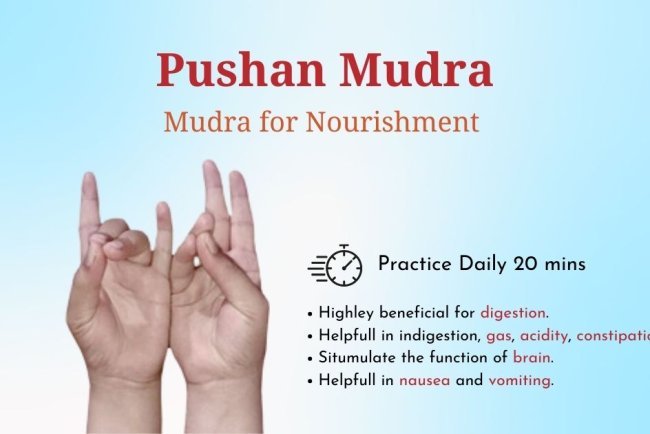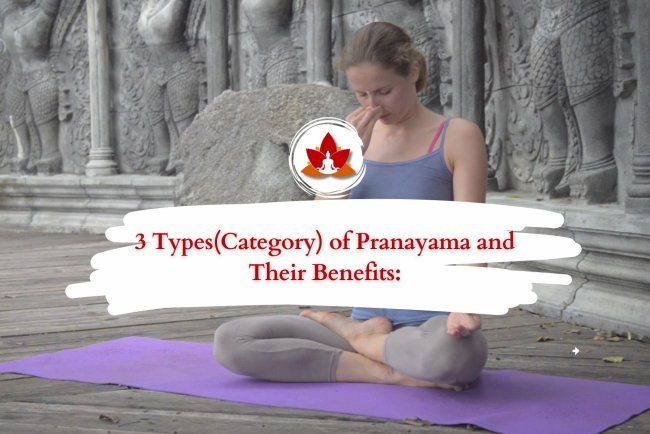What is Prana in Yoga? About Life Force and 5 Vital Energies

Prana in yoga and Ayurveda is the term to describe "life force," or energy that flows through all living things. Think of Prana as the vital energy that keeps life going, just as the breath fills the lungs, or just the spark to set the spirit alight. This concept, then, becomes central to yoga and ancient Indian philosophy-the control over Prana and awareness of it can lead to advanced physical, mental, and spiritual well-being.
For the yogi or spiritual seeker, understanding the meaning of Prana is a journey into oneself: learning how to balance and nurture the energies that shape every experience and interaction. In this post, we will explore in depth what Prana really is, its five vital energies, and how each one influences our body and mind.
What is Prana?
Prana is a frequently described term as the "life force energy" of yoga practice, much like Qi in traditional Chinese medicine. The word "Prana" comes from the Sanskrit language, meaning "continuous flow" by combining the prefix "pra" (which means constant) and "ana" meaning "movement".
Role in Yoga
Prana is considered the basis for many yoga practices:
-
Pranayama(Breathing Techniques): Controlled breathing helps to steer the Prana which fosters mental sharpness, vitality, and calmness.
-
Asana or Postures: Traditional Yoga postures let Prana flow as they slowly release blocks in both body and mind.
-
Meditation: Pranayama assists more concentration to Prana during meditation, and this brings deeper alignment within, calms the mind, and stabilizes the emotions.
With this awareness of Prana comes a new insight into the delicacy of one's energy, as well as methods to harmonize the mind, body, and spirit through conscious practice.
The 5 Vital Energies
Yogic philosophy believes that Prana can be divided into five forms of energies, or what is often referred to as the Pancha Pranas. And now let us speak to each of these vital energies, called "Vayu" meaning "wind" or "energy", as they are responsible for governing certain functions of the body and mind.
1. Prana Vayu (Retreating Energy)
-
Definition: Prana Vayu oversees breathing and the entry of any form of energy such as the air, food, or sensory experience.
-
Practices: Prana Vayu influences breathing, senses, and mental clarity
-
Correlation with Practice: Yoga practices such as Ujjayi breath and Nadi Shodhana resonate with Prana Vayu to develop focus, being present, and awareness.
2. Apana Vayu (Downward Flowing Energy)
-
Description: Samana Vayu sends energy horizontally, functioning to equalize heat, cook food, and break down tissue.
-
Functions: Regulates digestion, absorption, and metabolism.
-
Application in Yoga Practice: Balancing poses such as Dandasana (Staff Pose), Bhujangasana (Cobra Pose), and Navasana (Boat Pose) serve Samana Vayu by distributing the flow of energy and maintaining internal balance.
4. Vyana Vayu (Expanding Energy)
-
Description: Samana Vayu is a balancing energy of Prana and Apana, drawing in the energy towards the center and supporting digestion and metabolism.
-
Functions: It helps in the assimilation of nutrients, metabolism and also force distribution.
-
Samana Vayu Association with Yoga Practice: Twisting pose like Ardha Matsyendrasana (Half Lord of the Fishes Pose) as well as core strengthening pose assist Samana Vayu by improving digestion and finding balance in the body.
4. Udana Vayu (Upward Moving Energy)
-
Description: Udana Vayu relates to growth, expression, and upward flow in the body.
-
Functions: Influence of communication, self-expression, and spiritual ascension
-
Role of Yoga and Pranayama: Shoulder stand postures, Throat-opening such as Matsyasana (Fish Pose) and meditation practices help to build up Udana Vayu by building confidence through effective communication and need to grow and express.
5. Vyana Vayu (Pervasive Energy)
-
Description: Vyana Vayu spreads energy in the body to cover every other prana, assists in flow and movement.
-
Functions: Circulates, joint health, vitality.
-
Relation to Yoga Practice: The movement of the entire body from the Sun Salutations and all through the Vinyasa cycles involves Vyana Vayu. This breath enhances the circulation of energy while expanding the spaces in the body.
With one function, the other's activity works together uniquely so that there is a smooth flow of energies that enhances the improvement of the total person.
Is Prana an Energy?
Prana can well be described as a form of energy, but far from that of a physical or biological force. In yogic and Ayurvedic terms, Prana is a subtle life force that penetrates the smallest cell to the largest organism, and even the inanimate elements of the universe. As living energy, Prana sustains and animates life, whereas mechanical or electrical energy are dead and cannot achieve anything themselves. Here's how this compares with conventional ideas about energy:
-
Prana, or Life Energy: Not only can prana be described as the vitality of the body, but it is also the energy for the mind and spirit. It therefore could support every function like breathing, circulation, digestion, and even thought activity.
-
Field of subtle energy: Prana exists in a subtle body, the other half of the human body that the physical body deploys. There are several channels through which prana flows; these channels are referred to as nadis, and there are local, true condensations of prana at those points referred to as chakras. This form of energy cannot be defined by modern scientific devices but only by being aware of it with the help of practices like pranayama and meditation.
-
Influence on Consciousness: Prana also has an influence on the mind and feelings in yogic philosophy. Balanced Prana would give clearness and calmness while imbalances may develop a nervous, incredibly tired, or mental block situation.
Now, seeing Prana as energy, we can get a better understanding of it and connect more intimately, with it as being more than mere breath or oxygen. It is the invisible thread between body, mind, and spirit. Building up the Prana, or life energy, in the body by doing these practices through breathwork, mindfulness, and balanced living is supposed to bring much improvement to our wellness.
Where do we find Prana?
Prana is all-pervading, that is to say, it exists everywhere-in the air we breathe, food we eat, water we drink, even in the thoughts we think. However, there are factors and life habits where greater amounts of Prana occur and are more within reach. Here are the major Prana sources and their impact on our energy levels:
1. Breath (Air)
-
Direct and Powerful Source of Prana: Direct and Powerful source of Prana is the air we inhale. That is why breathing is a central exercise of yogas through practice-Pranayama, or controlled breathing.
-
Techniques of Breathing with Prana: Nadi Shodhana, or Alternate Nostril Breathing, which enhances the pranic energies of the body and brings results such as mental clarity, stress, and energizing the body are introduced. Along with it, Kapalabhati, or Skull Shining Breath, is also helpful.
2. Food
-
Life energy and prana: Fresh, whole foods, especially fruits, vegetables, and whole grains, contain a very high amount of Prana. These foods are considered as being alive and provide not only physical nutrients but also life energy.
-
Effect on Prana: Processed or stale foods contain low or "dead" Prana; this slows down the individual and causes fatigue. A diet high in fresh, organic foods will help maintain high Prana.
3. Sunlight
-
Solar Energy as Prana: Sun energy is very potent, and the stimulation of natural sunlight upon the body is said to enhance life-force energy. The classical sun worship as such is illustrated through one of its most widespread practice forms-Sun Salutations (Surya Namaskar).
-
Benefits of Sunlight on Prana Levels: Sunlight involves the production of Vitamin D, improves mood, and synchronizes circadian rhythms, all of which together augment Prana and vibrancy.
4. Water
-
Water as a Channel for Prana: Water, cool and fresh is filled with Prana. Fresh river and spring water have far more Prana than treated or stagnant water.
-
Hydration to Free Flow of Prana: Hydration is essential because through this, the Prana can flow freely in the body to cater to the demands of circulation, digestion, and the cells. Pure and clean drinking water enhances Prana and keeps the energy channels clean in the body.
5. Thoughts and Emotions
-
Mind Prana: The mind also contains Prana. Life-positive helpful thoughts are said to increase Prana, whereas negative thoughts reduce it.
-
Treatment to Raise Prana: Meditation or gratitude can improve Prana by manifesting a pleasing mental state. Positive thoughts and emotions help strengthen psychological and emotional growth.
6. Nature and Environment
-
Prana-Rich Environment: The time spent in natural surroundings, whether in a forest, mountain, or river, exposes us to higher levels of Prana. Nature calms and rejuvenates the individual works to balance the Prana, and thereby reduces stress.
-
Impact of Urban Life on Prana: Pollution, noise, and crowding in living environments can decrease Prana. Time spent with nature or designing a quiet environment at home can help Prana flow in life.
In short, Prana is everywhere; but the quality of prana is different based upon the source and our interaction with the source. If we align the choices in lifestyle with high-Prana sources such as fresh air, clean water, natural sunlight, positive thinking, and wholesome food, then we shall build a higher Prana flow inside us, which will enhance the healthiness of the body, purity of the mind, and communication with the spirit.
Prana for Health and Well-being
Prana represents the essence and energy we bring to the world. From sharp mental clarity and intellect to bodily strength and vitality, prana is present in all arenas. Prana supports us to be full of energy, alert, and to stay connected.
The Mental Health
Prana balance can bestow calmness, emotional resilience, and even inner peace. If the Prana balance is not correct, it causes anxiety, restlessness, or mental fogginess. Prana-based life practices help us maintain a sharp mind and focus.
Physical Health
Prana keeps the body's basic systems- respiration, digestion, and circulation- active and functioning energetically. Wherever there is an optimal flow of Prana throughout the body, natural vitality and minimum tension are reflected in physical health.
Spiritual Consciousness
Prana is the access to our spiritual selves. When Prana is developed through yoga and meditation, spiritual consciousness is enhanced, and a sense of inner connectedness to the universe is created.
Practices for Prana Development
There are so many ways one can tap into Prana for good health and general well-being. Here is a closer look at some excellent Prana-releasing activities:
Breath Control or Pranayama
Pranayama is the controlled breath which has been said to control and energize Prana
-
Nadi Shodhana or Alternate Nostril Breathing: Balances energy channels and calms the mind.
-
Kapalabhati or Skull Shining Breath: Energizes the body, purifies the respiratory system, and stimulates digestion.
-
Bhramari or Bee Breath: Calms the mind, relieves stress, and enhances focus.
Mindfulness Meditation and Visualization
The meditative practice focused on Prana, the activity that helps cultivate clear mental states and inner serenity. It is practiced by visualizing breath moving into a body or chakra meditation together as this deepens our awareness and connection with Prana.
Diet and Lifestyle
The quantity of Prana flowing through us is amplified by the consumption of fresh, natural foods that harmonize with our body's needs. Foods replete with life force energy—fruits, vegetables, whole grains, and clean water, for example—naturally uplift Prana levels. Other nourishing practices are simply spending time in nature, getting good rest, and staying well hydrated.
Mindful Movement
Movement of intention through postures, asanas is a direct way to enhance and circulate Prana. Mindful movement helps Prana flow freely, removes blocks of energy, and balances our five vayus.
Conclusion
Understanding Prana-the life force energy opens doors to a deeper, more balanced way of living. Examining the five vital energies--Prana, Apana, Samana, Udana, and Vyana-help us understand how our bodies and minds work so we can live purposefully, clearly, and with vigor.
Create routines in your life to provide opportunities to incorporate Prana-based practices and feel the effects that the balancing energies bring. If you want stronger immersion, then attending a yoga retreat would be quite important in furthering your knowledge and experience about Prana. Set a great beginning to your journey, embrace the energy within you, and nourish the life force that binds all humans together.
What's Your Reaction?


























